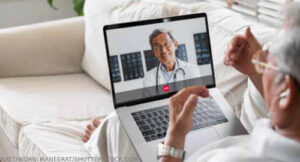 Does the Research Match Providers’ Gut Feelings about Remote Care?
Does the Research Match Providers’ Gut Feelings about Remote Care?
EULAR 2024 (VIENNA)—The number of rheumatology patients is increasing, and the number of rheumatology providers is decreasing. Wait times for new and follow-up appointments are long, especially in rural areas. In short, access to care is and will continue to be a pressing issue. Using telehealth for follow-up and self-management interventions is one possible way to mitigate these issues. In fact, the use of telehealth during the COVID-19 pandemic could be seen as a proof-of-concept test, leading to increased use and social acceptability of remote care.
But is this change good? What do the data show?
At EULAR 2024, three experts engaged the audience in a lively discussion framed by personal experiences and available evidence. Additional commentary from Annette De Thurah, PhD, professor, Department of Clinical Medicine, Section of Rheumatology, Aarhus University, Denmark, is included below.
Remote Care
Remote care uses digital technologies (i.e., telehealth interventions) when the patient and provider are not in the same place. This approach includes communication before and after appointments, live video encounters, electronic disease monitoring and screening—sometimes via third-party apps.1

Dr. De Thurah
Remote care has become an increasingly active area of research, and Dr. De Thurah and colleagues published a paper in 2022 that highlights considerations for the “development, prioritization and implementation of remote care and telehealth for people with rheumatic and musculoskeletal diseases.”1
Ask the Audience, Ask the Expert
This EULAR session had a unique conversational and convivial format. The audience was polled for their gut feeling on four different questions, followed by evidence-supported conversations with the experts.
Question 1: Is remote rehabilitation provided through digital solutions as effective as face-to-face rehabilitation?
About half of the audience felt that remote rehabilitation services, such as physical therapy, were as effective as face-to-face sessions and half did not.
“Remote rehabilitation has been shown to be as effective as in-person approaches,” said Dr. De Thurah. “This [area] is actually where we have the most data, and studies keep coming in. The quality of evidence is moderate to strong within all the studies. The outcome in these studies varies strongly, but overall, they’re mostly in favor of telehealth interventions.”2,3
Some advantages of remote rehabilitation include better communication between providers and patients, greater accessibility, increased patient comfort and safety in their home environments, and patient empowerment and self-management.



